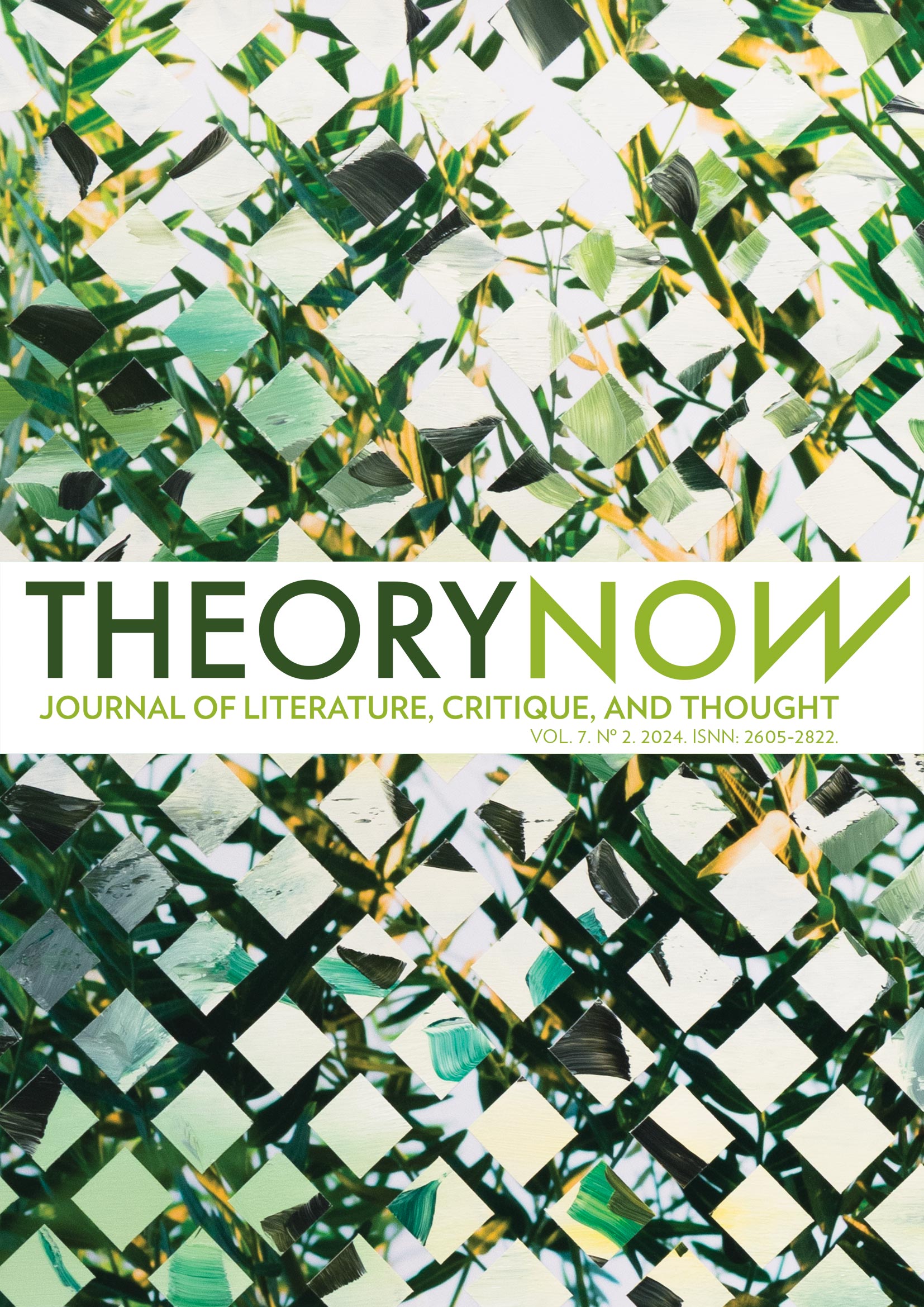The Limits of Interpretation, the Interpretation of Limits
DOI:
https://doi.org/10.30827/tn.v7i2.27030Keywords:
Limits of interpretation, Roman Ingarden, Places of indeterminacy, Work of art, Aesthetics, Ontology, EpistemologyAbstract
This essay sets out to address the difficult and extensive problem of the limits of interpretation. To this end, I will focus specifically on Roman Ingarden's phenomenological aesthetics and his quest to establish the objective nature of the work of art (through a description of its schematic structure) as a mode of regulating the reader’s concretizations. I will attempt to analyse the Polish philosopher's strategies and arguments, especially with regard to the concept of places of indeterminacy, in order to demonstrate that the impossibility of the establishment of the limits of the work leads to the impossibility of an ontological limitation of the limits of interpretation. In turn, I will try to argue that such an epistemological situation situates the discussion on the value of an interpretation not in terms of fidelity to a supposed artistic objectivity but in terms of the aesthetic value of the concretization, understood as an encounter with the unexpected and an experience of de-automatisation.
Downloads
References
Bajtín, Mijaíl y Pável Medvédev. “La evaluación social, su papel, el enunciado concreto y la construcción poética”. Traducido por Desiderio Navarro, Enunciación, vol. 15, no. 1, 2010, pp. 164-172.
Bayard, Pierre. Enquête sur Hamlet. Paris, Minuit, 2002.
____. Œdipe n’est pas coupable. Paris, Minuit, 2021.
Bloom, Harold. A Map of Misreading. Oxford, Oxford University Press, 2003.
Bohannan, Laura. “Shakespeare in the Bush”. Natural History, 1966, https://naturalhistorymag.com/picks-from-the-past/12476/shakespeare-in-the-bush 2 May 2024.
Borges, Jorge Luis. Borges oral. Barcelona, Bruguera, 1980.
____. Ficciones. Madrid, Alianza, 1998.
____. “Kafka y sus precursores”. Otras inquisiciones. Madrid, Alianza, 1998, pp. 162-166.
____. “Observación final”. Obras Completas, vol. 20, Buenos Aires, Sudamericana, 2004, p. 308.
Brinker, Menachem. “Two Phenomenologies of Reading: Ingarden and Iser on Textual Indeterminacy”. Poetics Today, vol. 1, no. 4, 1980, pp. 203-212.
Caillois, Roger. “Rectificación a una nota de Jorge Luis Borges”. Sur, no. 91, 1942, pp. 71-72.
Culler, Jonathan. “En defensa de la sobreinterpretación”. Interpretación y sobreinterpretación, Stefan Collini (ed.), traducido por Juan Gabriel López Guix, Cambridge, Cambridge University Press, 1997, pp. 127-142.
Eco, Umberto. Los límites de la interpretación. Traducido por Helena Lozano, Barcelona, Lumen, 1992.
____. “La sobreinterpretación de los textos”. Interpretación y sobreinterpretación. Stefan Collini (ed.), traducido por Juan Gabriel López Guix, Cambridge, Cambridge University Press, 1997, pp. 56-79.
____. Lector in Fabula. Traducido por Ricardo Pochtar, Buenos Aires, Sudamericana, 2013.
Fish, Stanley. Is There a Text in This Class? Cambridge, Harvard Universitiy Press, 1980.
Garayalde, Nicolás. “Del texto al hipertexto I. La ironía y los límites internos del texto”. Estudios de Teoría literaria, vol. 10, no. 22, 2021, pp. 115-129.
____. “Del texto al contra-texto”. Anales de Filología Francesa, no. 28, 2020, pp. 325-351.
Genette, Gérard. Figures III. Paris, Seuil, 1972.
Ingarden, Roman. La obra de arte literaria. Traducido por Gerald Nyenhuis H., México, Taurus, 1998.
____. “Concreción y reconstrucción”. Estética de la recepción. Warning Rainer (ed.), traducido por Ricardo Sánchez Ortiz de Urbina, Madrid, Visor, 1989, pp. 35-53.
____. La comprehensión de la obra de arte literaria. Traducido por Gerald Nyenhuis H., México, Iberoamericana, 2005.
Iser, Wolfgang. El acto de leer. Traducido por J. A. Gimbernat y Manuel Barbeito, Madrid, Taurus, 1987.
Jones, Ernest. Hamlet and Oedipus. New York, Double Day Anchor Books, 1954.
Kryeziu, Sazan. “The Concretization of the Literary Work of Art”. Primerjalna Književnost, vol. 44, no. 1, 2021, pp. 147-166.
Mukařovský, Jan. Función, norma y valor estéticos como hechos sociales. Buenos Aires, El cuenco de plata, 2011.
Ritvo, Juan. “Teoría de la lectura. Primera clase, año 1985”. No hay teoría de la lectura. Rosario, Facultad de Humanidades y Artes, 2017, pp. 17-32.
Rorty, Richard. “El progreso del pragmatista”. Interpretación y sobreinterpretación. Stefan Collini (ed.), traducido por Juan Gabriel López Guix, Cambridge, Cambridge University Press, 1997, pp. 104-126.
Saussure, Ferdinand. Curso de lingüística general. Traducido por Amado Alonso, Buenos Aires, Losada, 2005.
Shklovski, Viktor. “El arte como artificio”. Teoría de la literatura de los formalistas rusos. Tzvetan Todorov (comp.), traducido por Ana María Nethol, Buenos Aires, Siglo XXI, 2008, pp. 77-98.
Walsh, Rodolfo. “Dos mil quinientos años de literatura policial”. Cuentos para tahúres y otros relatos policiales, Buenos Aires, Puntosur, 1978, pp. 163-168.
Published
How to Cite
Issue
Section
License
Theory Now. Journal of Literature, Critique, and Thought is an immediate open-access publication which is available at no cost for readers and authors alike. Authors are not charged any kind of fee for the editorial processing of their articles. Reading, downloading, copying, distributing, printing, searching, linking or reusing all published articles for non-commercial uses is allowed on the condition of citing the author, the journal and the editing body. All intellectual material published in this journal is protected under a Creative Commons Attribution-NonCommercial 3.0 Spain license.
Dissemination of the articles in social (Facebook, Twitter, Linkedin, etc.) and scientific networks (ResearchGate, Academia.edu, etc.), public repositories at universities and other institutions, blogs, personal or institutional websites, Google Scholar, ORCID, ResearchID, ScopusID, etc. is strongly encouraged. In all cases, the intellectual property of the articles and any possible monetary profits derived from them belong exclusively to the authors.













